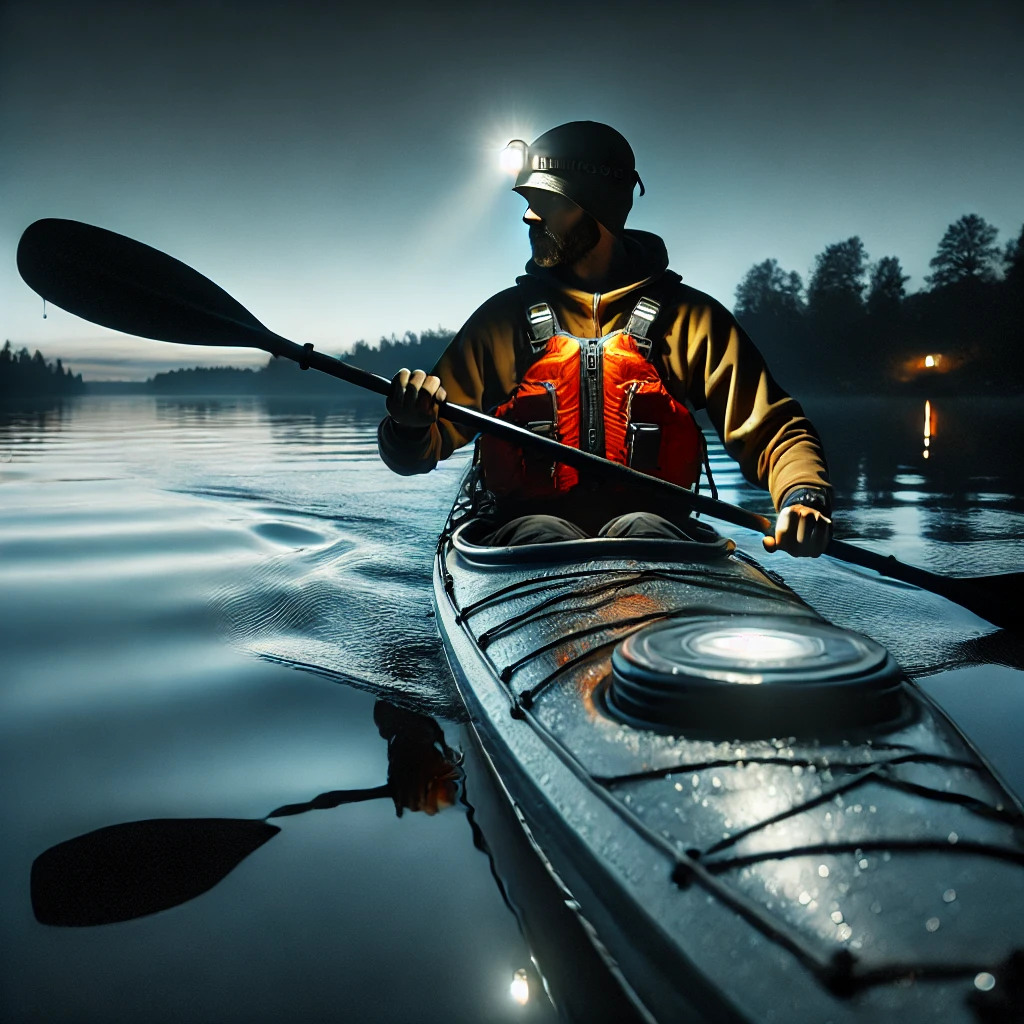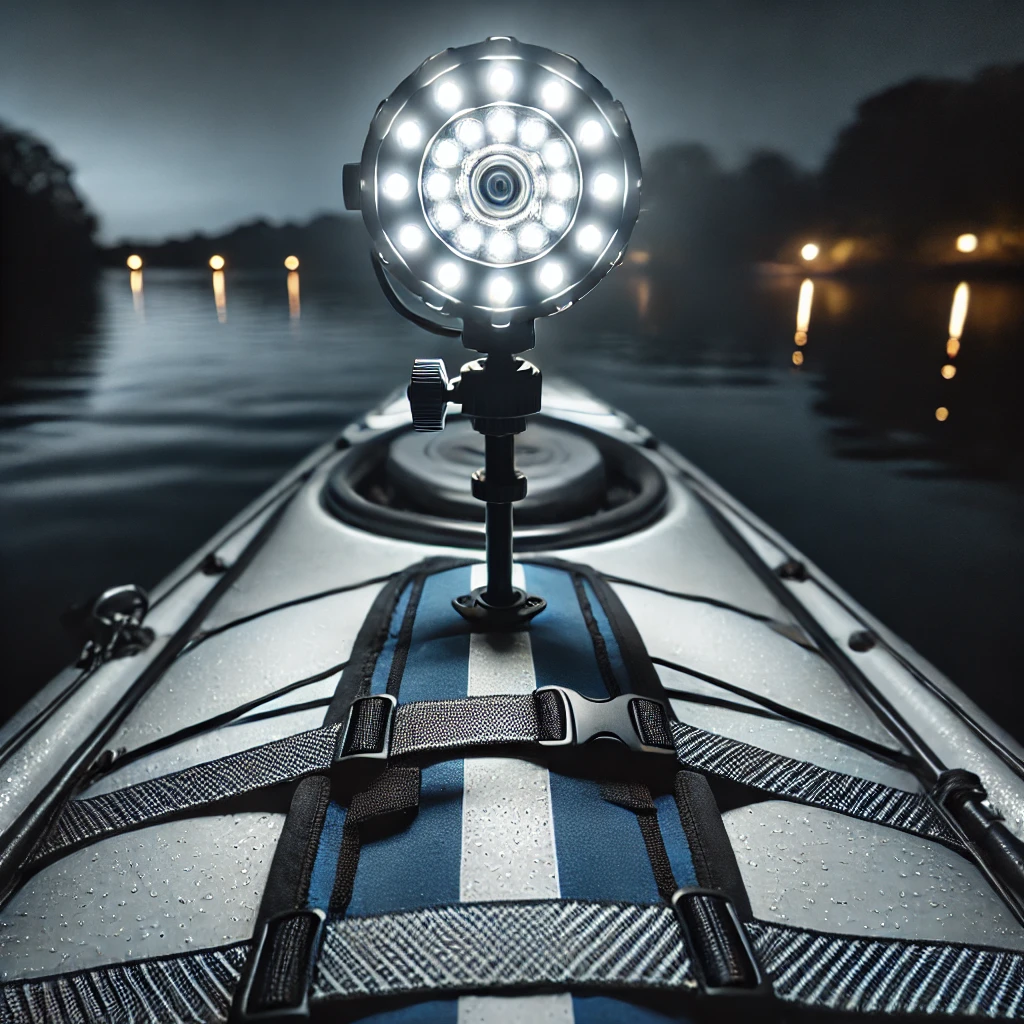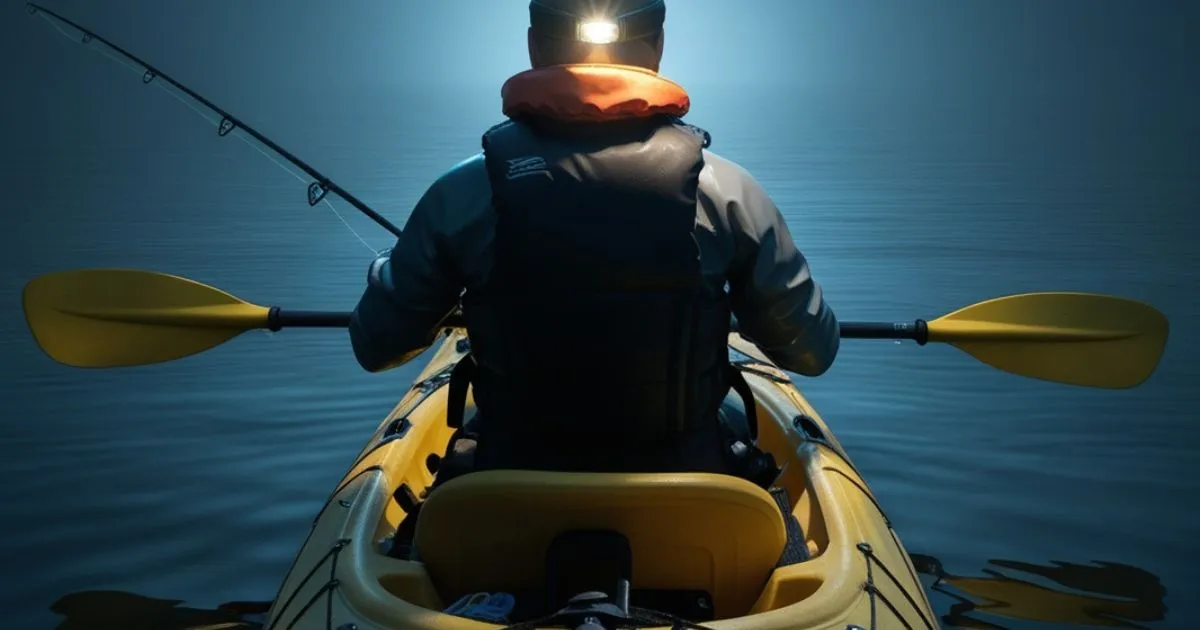Table of Contents

Imagine paddling through the calm waters of a quiet lake at night. The moonlight dances on the surface, casting an ethereal glow, and the world around you feels peaceful and serene. But then, as the night deepens, you realize you’re not alone on the water. In the distance, a boat’s headlights gleam. Your heart skips a beat as you ask yourself: “Do kayaks need lights at night?”
This question isn’t just a passing thought—it’s a vital consideration for your safety and the safety of others. Whether you’re exploring a peaceful river or navigating a crowded waterway, proper lighting is crucial when kayaking after dark. In this guide, we’ll answer the question, “Do kayaks need lights at night?”, and cover everything you need to know about kayak lighting regulations and safety tips.
Why Kayak Lighting Matters at Night
Increased Risk of Accidents
Nighttime kayaking, while exhilarating, comes with heightened risks. The darkness significantly reduces your visibility to other boaters, making collisions more likely. The more visible you are, the less chance there is for an accident to occur. Without the right lights, others may not see you in time to avoid a collision, particularly in busy waterways where other vessels are moving quickly.
Legal Requirements for Kayak Lights
Aside from safety, there’s also the legal aspect to consider. Many regions have specific laws that require kayaks to be equipped with lights when paddling at night. Ignoring these regulations can lead to fines or even accidents that could have been prevented.
Whether you’re kayaking on a river, lake, or ocean, kayak lighting regulations generally require some form of lighting that ensures you’re visible to other boaters. These laws aren’t just there to protect you—they’re there to keep everyone on the water safe.
What the Law Says About Kayak Lights
Do Kayaks Need Lights at Night? What the Law Says
Many kayakers often ask, “Do kayaks need lights at night?” The short answer is yes—most laws require non-motorized vessels, including kayaks, to have lights when navigating after sunset.
Boating laws regarding visibility vary by country and even by state or province, but most regions require that you use lights when kayaking at night. Understanding what’s required in your area is essential to avoiding penalties.
For example:
- In the United States, the U.S. Coast Guard mandates that all non-motorized vessels, including kayaks, use a white light visible from at least 2 miles when navigating at night.
- In Canada, the Canadian Coast Guard requires kayaks to display a white light that can be seen from a 360-degree radius, ensuring complete visibility.
- In Australia, similar rules apply, with regulations mandating that kayaks use a white light visible from at least 2 nautical miles.
Fines for non-compliance with these rules can range from a slap on the wrist to hefty penalties, depending on your location. And if you’re involved in an accident due to insufficient lighting, the consequences can be much more severe.
Types of Lights Required for Kayaks

What Lights Do You Need for Nighttime Kayaking?
Understanding the types of lights required for nighttime kayaking is essential for complying with the law and ensuring your safety.
360-Degree White Light
The most common type of light required for night kayaking is a white light that is visible from all angles (360 degrees). This type of light ensures that no matter which direction a boat or other kayaker is coming from, they will be able to spot you.
- Required in most regions: As mentioned earlier, this is a universal requirement across many boating regulations, including those from the U.S. Coast Guard and Canadian Coast Guard.
- Key feature: Visibility from a distance of at least 2 miles.
LED vs. Incandescent Lights
LED lights are the preferred choice for kayakers for several reasons:
- Energy efficiency: LED lights last longer and consume less power, making them more reliable for extended kayaking trips.
- Durability: They are more resistant to water and impact, perfect for the rugged conditions on a kayak.
- Brightness: LEDs are often brighter than traditional incandescent bulbs, ensuring better visibility in low-light conditions.
Flashing vs. Steady Lights
- Flashing Lights: While flashing lights may seem like an exciting option, they are often used in emergency situations. They’re not ideal for general visibility, as steady lights are better for maintaining clear sightlines.
- Steady Lights: These are generally the preferred option for night kayaking, as they provide constant and reliable illumination, making it easier for other boaters to spot you from afar.
Choosing the Right Lighting for Your Kayak
How to Pick the Best Kayak Lighting for Your Needs
With so many options available, choosing the right kayak lights might seem overwhelming. Here are some key considerations to help you make the right choice:
Waterproof Rating
Since kayaks are exposed to water, it’s crucial that your lights are waterproof. Look for lights with an IP67 rating or higher, as this ensures they are protected against water immersion. Many kayak lights come with a waterproof seal to ensure they can withstand the rigors of paddling in the rain or rough waters.
Battery Life and Durability
When choosing a light, consider its battery life and durability. A light with a long battery life will keep you visible through extended kayaking trips, and durable lights will hold up against the wear and tear of your adventures.
- Rechargeable lights: A popular option for many kayakers.
- Battery-operated lights: Ideal for short trips or emergencies, but remember to carry extra batteries.
Ease of Installation and Use
The last thing you want during your kayaking trip is a complicated lighting setup. Choose lights that are easy to install and simple to use. Many kayak lights are designed to be attached to your boat without tools, making them quick and hassle-free.
Kayak Safety Tips for Nighttime Paddling
Do Kayaks Need Lights at Night? Risks of Not Using Proper Lighting
In addition to lighting, there are other precautions you should take to ensure your safety while kayaking at night.
Stay in Familiar Waters
Navigating unfamiliar waters at night can be dangerous. If you’re new to nighttime kayaking, stick to waters you know well. Familiarity with the terrain helps you avoid obstacles and navigate with confidence, even in low-light conditions.
Use a Buddy System
The buddy system is an essential safety measure when kayaking at night. Having someone else with you ensures that someone can help in case of an emergency. It also provides extra visibility for each other, especially when both kayaks are equipped with lights.
Wear Reflective Gear
Wearing reflective gear increases your visibility and adds an extra layer of safety. Consider adding a reflective vest, clothing, or gear to make sure other boaters can spot you from a distance.
Carry Extra Batteries and Lights
It’s always wise to be prepared for the unexpected. Carry extra batteries or backup lights in case your primary light source fails. This can make a huge difference in an emergency situation, especially if you’re in the middle of the water.
Conclusion
Do Kayaks Need Lights at Night? Absolutely.
Whether you’re paddling for adventure or relaxation, lighting is not optional—it’s an essential part of kayaking safety. By equipping your kayak with the proper lights, you not only comply with legal requirements but also ensure your safety and that of others. Don’t let the beauty of a nighttime paddle turn into a preventable accident.
Remember, when it comes to nighttime kayaking, being visible is being safe. Get the right lights, stay prepared, and paddle confidently into the night!
FAQ Section
Do Kayaks Need Lights at Night?
- Why do kayaks need lights at night?
- Kayaks need lights at night to ensure visibility, avoid collisions, and comply with legal regulations.
- Are kayak lights legally required?
- Yes, in most regions, kayaks are required to have 360-degree white lights visible for at least 2 miles.
- What happens if you kayak at night without lights?
- You risk fines, increased chances of accidents, and difficulty signaling for help in emergencies.

